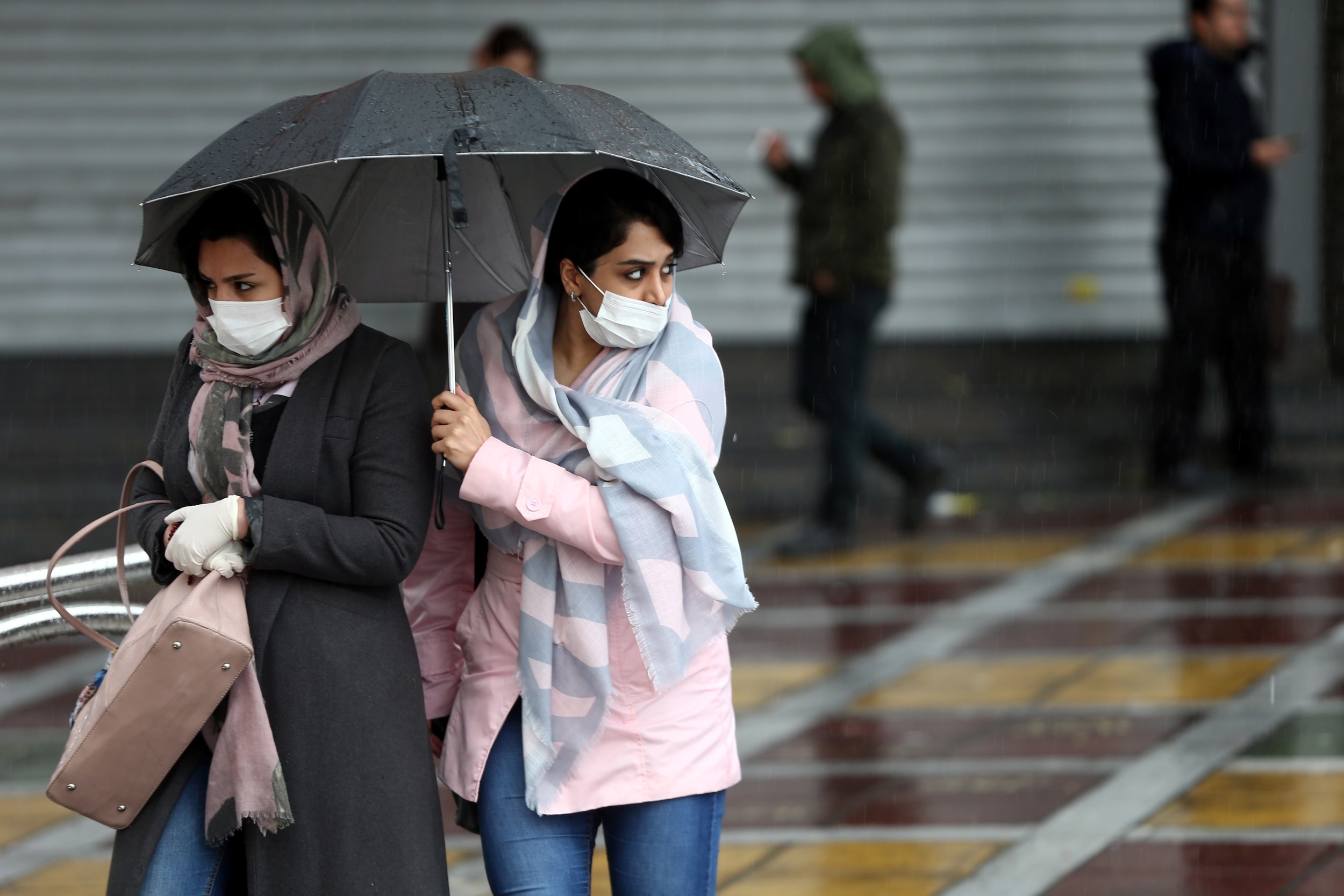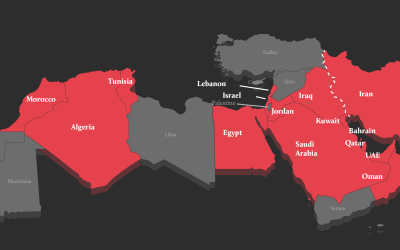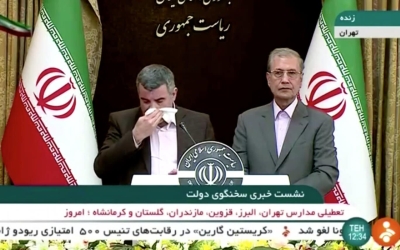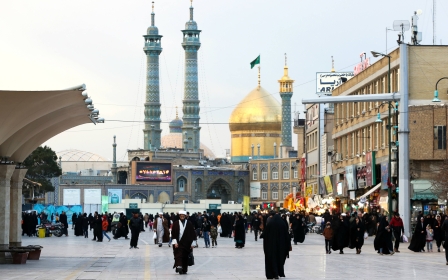Iran gripped by rumour and counter-rumour as coronavirus death toll rises

Iranians never really imagined that the global panic surrounding the coronavirus would come to haunt them.
But in the span of a week, Iran has come to the fore as the epidemic has spread, with at least 61 total cases and 16 deaths reported by Iranian authorities as of Tuesday.
New MEE newsletter: Jerusalem Dispatch
Sign up to get the latest insights and analysis on Israel-Palestine, alongside Turkey Unpacked and other MEE newsletters
The first cases of the virus - officially known as COVID-19 - were announced by Iran’s health ministry just one day before the 21 February legislative elections.
But MP Ahmad Amirabadi claimed on Monday that the coronavirus first broke out in the holy city of Qom some three weeks prior.
With the government’s public image already significantly tarnished by an attempted cover-up following the downing of a Ukrainian passenger plane, the emergence of the virus in a country already struggling under US sanctions has sown fear and distrust in authorities, as questions arise on the true extent of the epidemic in Iran and the measures in place to address it.
Death tolls and theories abound
The outbreak of the newest strain of coronavirus originated in China in December, where it has reportedly killed more than 2,500 people.
The World Health Organisation reported this month that 80 percent of COVID-19 cases report only mild, flu-like symptoms, and just 2 percent of cases have resulted in death. While COVID-19 has a far lower death rate than epidemics of similar viruses such as SARS or MERS, it has spread far wider.
But while the international health institution has sought to stave off misconceptions surrounding the disease, Iranians have felt left in the dark regarding the full scope of the virus in the country.
Meanwhile, Iranian media reported that an official statement indicated another 916 patients were suspected - but not confirmed - of having the disease.
But Amirabadi, the MP from Qom, claimed a day earlier that “around 50” people have died in Qom.
Iranian Deputy Health Minister Iraj Harirchi rejected Amiradabi’s allegations, saying that if the MP could prove it, “I will resign”.
Harirchi has since been diagnosed with coronavirus himself.
Another MP from Qom, Alireza Zakani, has also jumped into the fray. The freshly elected parliamentarian said on Monday that 42 people had died in Qom in the past two weeks, nine of whom had tested positive for COVID-19. He added that 27 out of 42 deaths were suspected of having contracted the disease, while clarifying that official test results hadn’t come out yet.
To further add to the confusion, Iranian social media posts have claimed that the coronavirus had already claimed the lives of more than 70 people in Qom.
‘A number of hardliners and radicals still don’t want to understand to what extent this disease is fatal and deadly’
- Masoud, Qom resident
Speaking on condition of anonymity, a Qom-based infectious disease specialist told Middle East Eye that he had personally witnessed the cases of nine patients who had died before 20 February.
But, he tempered, “I think the reason behind the government not unveiling the truth is that they want to avoid chaos in the country and prevent people from being frightened."
Trust in the government among Iranian citizens has been severely eroded since a Ukrainian International Airlines passenger plane crashed near Tehran on 8 January, killing all of its 176 passengers, including many Iranians.
The crash happened hours after the Islamic Revolutionary Guard Corps (IRGC) carried out missile attacks on two bases in Iraq hosting US troops, but the IRGC had immediately denied any connection between the attacks and the plane crash - only to admit two days later that the plane was hit by its air defence system missiles as a result of human error.
Political hardliners have accused Iran’s moderate government of revealing the presence of the virus in the country just before elections in order to frighten people from going to the polls. Meanwhile, other critics have claimed that the Iranian government had been aware that COVID-19 had reached the country, but refrained from announcing the news in order to ensure a high electoral turnout.
“We can’t yet say whether things are getting dangerous or not,” Mohammadreza Zahedpour, a lung specialist in Tehran, told MEE. “We can’t yet predict it and I think as long as nothing is definite, we shouldn’t announce it as it would make people scared.”
He nonetheless added: “All organisations in Iran should cooperate with each other in order to stop the disease from spreading more in the country. For example, hospitals should be asked to report the causes of death of people accurately, so we can reach a conclusion on this.
“What is important is that people should refrain from appearing in places such as stadiums, cinemas or even holy sites for prayer, because this disease shows no symptoms in the first days.”
A holy city in the eye of the storm
Zahedpour’s suggestions to prevent further spread of the virus seem easier said than done however, particularly calls to refrain from going to religious sites.
Qom, the most religious city of Iran where the majority of senior clerics and grand ayatollahs live, is at the heart of Islamic Republic - and of the epidemic.
As the largest centre for Shia Islamic scholarship in the world, the city attracts many foreigners - once again fuelling a flurry of sometimes contradictory speculation over how COVID-19 entered the country.
On Sunday, Health Minister Saeed Namaki said that official surveys had established that one of the first casualties “was a trader in Qom who had travelled to China via indirect flights”.
Meanwhile, other ministry officials said “Chinese labourers” in Qom were the ones who brought the virus to Iran.
And on Monday, the chancellor of the medical university of Mashhad claimed that “700 Chinese clerics” studying in Qom’s seminary were behind the spread of the coronavirus.
Senior cleric and seminaries chairman Ayatollah Alireza Araafi refuted these allegations that same day, saying only two Chinese clerics has been admitted in the seminary in the past two months.
Araafi added that Chinese clerics had been held in quarantine for a “sufficient” period of time to rule that the coronavirus “has nothing to do with Chinese clerics”.
Meanwhile, the mood has been sombre in Qom. “When you walk in the streets of Qom, the first thing that will draw your attention is that a majority of people are wearing masks,” Masoud, a 24-year-old resident of the city, told MEE. “A large number of people remain in the house, just like a personal quarantine.”
Masoud noted that pharmacies were running out of masks across the city “within two hours”. “This is because of those who are hoarding masks illegally in order to resell them at a huge profit, which is not moral at all,” the young man said.
“Some people are very disappointed and curse officials. They believe that the number of deaths announced by the Health Ministry is not true,” Masoud added.
The Qom resident accused officials in the city of not taking the disease seriously enough, pointing out that the chairman of the shrine of Fatima Masoumeh had refused to close the holy site’s doors despite governmental recommendations.
“A number of hardliners and radicals still don’t want to understand to what extent this disease is fatal and deadly,” Masoud said. “I don’t know what they are trying to prove.”
Residents desert the capital
Meanwhile, in the capital city Tehran, the usually bustling streets are becoming progressively emptier as many private companies, schools and universities have closed down to prevent the infection of more people.
Many Tehran residents have decided to leave the city as a result - a move that may in fact increase the spread of COVID-19 throughout the country.
As frightening rumours abound, people have been flocking to markets to buy necessary items and fruits and vegetables.
“I waited for half an hour in line to pay for what I bought from the grocery,” Reza Mardomi, a civil engineer, told MEE. “Grocery stores and markets are getting very crowded, as people think healthy and uninfected food and fruits may become scarce in the near future.”
According to WHO, COVID-19 is mainly transmissible from person to person, with the virus not surviving long outside of the body.
As many questions remain unanswered regarding how the virus will yet evolve in Iran, economist Jamshid Pajouian predicts the epidemic will have a negative effect on the country’s economy, already buckling under the pressure of US sanctions.
Speaking to local media, Pajouian said: “We are now witnessing a situation where many people won’t leave home to buy items other than essentials, [therefore] many items will no longer [have any buyers].
“On one hand, consumers will be at a loss as some commodity prices will rise, while on the other hand, suppliers will also face a loss. This places a kind of pressure on the country's economy and can drastically reduce the GDP.”
This article is available in French on Middle East Eye French edition.
Middle East Eye delivers independent and unrivalled coverage and analysis of the Middle East, North Africa and beyond. To learn more about republishing this content and the associated fees, please fill out this form. More about MEE can be found here.







